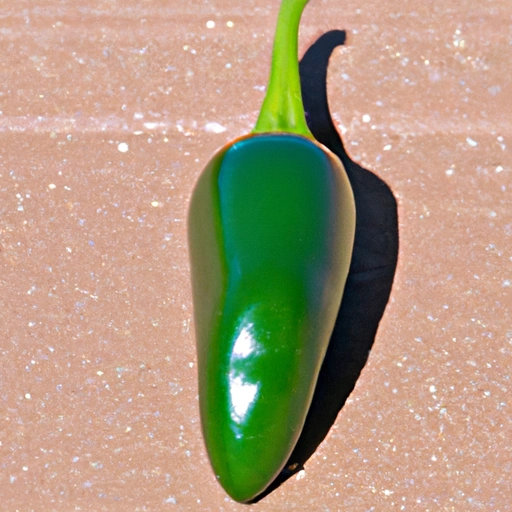Jalapeño Pepper
Description

The jalapeño pepper is a medium-sized chili pepper that is a popular ingredient in many cuisines around the world, known for its balanced heat and distinctive green color when unripe. It originates from Mexico, but has become a staple in both American and European cooking. Jalapeños are typically picked and consumed while still green, but they can also be allowed to fully ripen and turn red, orange, or yellow. They are commonly used in a variety of dishes, providing a spicy yet palatable heat to salsas, dips, and many other recipes.
Common uses
Jalapeño peppers are often used to add a mild to moderate heat to dishes without overwhelming the other flavors. They can be diced and added fresh to salsas and salads, sliced for toppings on pizzas and nachos, or stuffed with cheeses and meats for a flavorful appetizer. Jalapeños are also commonly pickled and served as a condiment.
Nutritional value
Calories
One medium-sized jalapeño pepper (about 14 grams or 0.5 ounces) contains approximately 4 calories.
Protein
Jalapeño peppers provide about 0.2 grams of protein per pepper.
Fat
Jalapeños are low in fat, with less than 0.1 grams per pepper.
Carbohydrates
They contain about 0.9 grams of carbohydrates, primarily in the form of dietary fiber.
Vitamins
Jalapeños are a good source of Vitamin C, Vitamin A, and Vitamin K.
Minerals
They also contain small amounts of minerals such as potassium and magnesium.
Health benefits
Jalapeño peppers are known for their capsaicin content, which has been linked to various health benefits including pain relief, weight loss, and reduced inflammation. The peppers are also rich in antioxidants and vitamins that can help boost the immune system and promote overall health.
Potential risks
For some individuals, consuming jalapeños may lead to digestive discomfort or exacerbate conditions such as acid reflux. It's also possible to develop a mild to severe allergic reaction to jalapeño peppers. Handling jalapeños, especially cutting or de-seeding them, can cause 'jalapeño hands,' a form of contact dermatitis, so it's advised to wear gloves during preparation.
Common recipes
Jalapeño peppers are versatile and can be incorporated into a range of recipes, from classic Mexican dishes like guacamole and pico de gallo to American favorites like jalapeño poppers and spicy cornbread.
Cooking methods
They can be roasted, grilled, sautéed, or even served raw to retain their crunchy texture. Jalapeños can also be smoked and dried to produce chipotle.
Pairing with other ingredients
These peppers pair well with a variety of foods, including cheeses, meats, fruits, and starches. Their spice level is balanced when combined with dairy products, which help to mitigate the heat.
Summary
The jalapeño pepper is a hot, flavorful ingredient that has crossed cultural boundaries to become a beloved addition to many dishes. With its rich history, nutritional benefits, and myriad of uses in the kitchen, jalapeño peppers offer a spicy zest that can enhance a wide array of culinary creations.